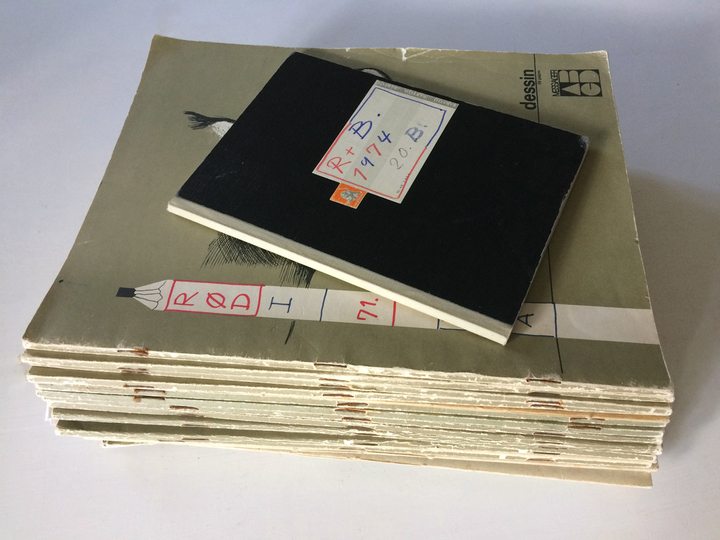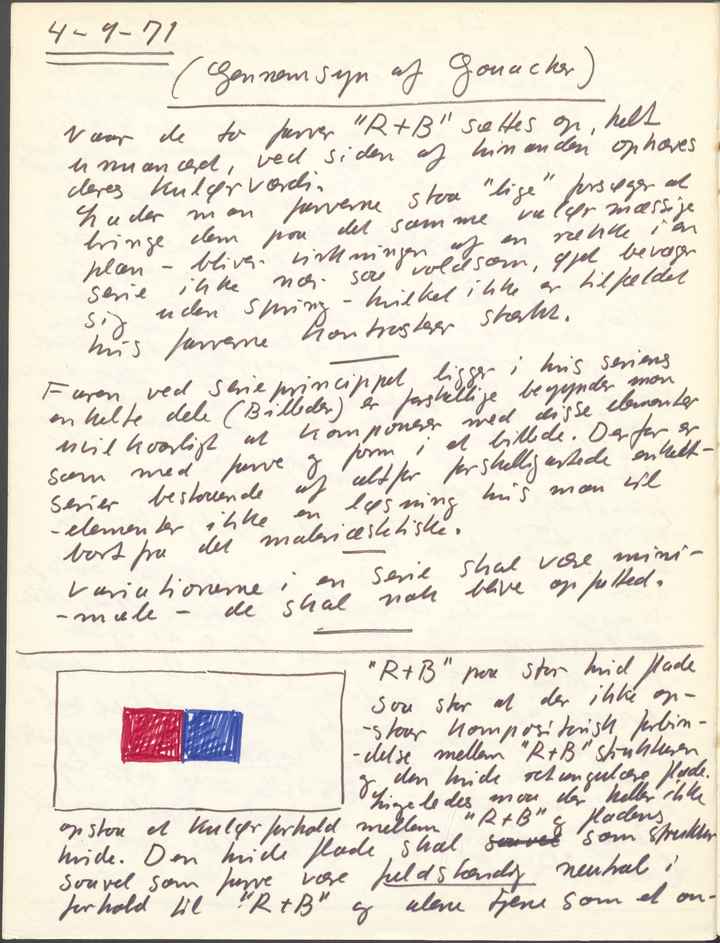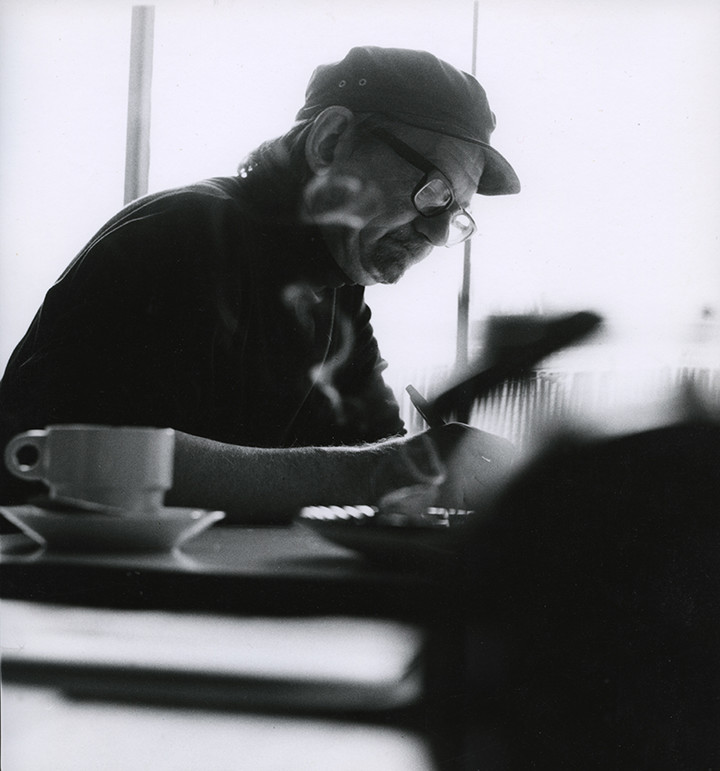Albert Mertz
Introduction

Albert Mertz in his home in Savigny sur Orge, Paris. 1968. Photo: Susanne Mertz.
Danish Albert Mertz (1920–1990) left behind a large collection of sketch- and notebooks, called Notes (in Danish: Noteværket). Most of the entries date from 1968–74, while he lived in Paris and developed his best-known legacy as an artist, his ‘Red + Blue proposition’. During this period, theory and analysis were more important to Mertz than the actual creation of art, which become almost an appendix to his Notes. In his uncompromising quest to create the most neutral and open work of art based on hypotheses and reflections on painting, Mertz created a material that is unique in art history. Intelligent and persistent, he undertook in-depth studies and left behind an unparalleled record of his artistic process, which he positioned in the context of – and in opposition to – contemporary art. In addition to writings conveying thoughts and reflections on as well as discussion and analyses of his own (and others’) art, Notes also contains many meticulous drawings and sketches for work series and large spatial installations. Some were realized and exhibited, but during this period and later, Mertz was less interested in results than in studies and experimentation, and many interesting and important ideas remained in the note- and sketchbooks.
Notes includes about 185 note- and sketchbooks with texts, sketches and pictures from the period of 1964–79. They are divided into five categories, three of which are accessible on this website:
Red + Blue Books – 1971–1975: an independent collection of 24 books related to Mertz’s development and study of his ‘Red + Blue proposition’. This concept has been characterized as the lifeblood of Mertz’s later career, which he tested in both practical and theoretical terms.
Studio Books – 1964–79: 14 small exercise books and 28 large kardusbøger. The books from the early years mainly contained ideas for artworks and summaries of results; towards the late 1960s, they were increasingly used as notebooks with reflections on his body of work and broader practice. Mertz’s initial ideas and thoughts on the Red + Blue concept are found in the Studio Books.
Journals/Notes – 1957–90: 40 notebooks and exercise books with personal notes on his artistic practice, his general understanding of art and the struggles related to its creation. The journals serve to contextualize Mertz’s works and contain many interesting thoughts and reflections on the artist’s role and mission.
The final two categories are Picture and Scrap Books – 1966–75: 37 notebooks and exercise books with clippings and text and One-Off Books – 1957–72: 12 book objects that may have been intended for publication.
Albert Mertz left behind one of the most interesting bodies of work of any Danish artist from the 20th century. A main theme of his life’s practice was a constant investigation of art and, not least, its relationship with reality. In a process driven by experimentation and doubt, he consistently asked, ‘What is art?’, as he pursued artistic thoughts or ideas across different media, from painting, drawing and collage to sculpture and film. He was also a significant voice in the art world, published numerous essays and other texts and stayed up to date on developments both in Denmark and in the international world of art. Mertz represented an important link between the abstract art of the 1940s and the neo-avant-garde trends of the postwar era, and his art reflects many of the developments that unfolded during the second half of the 20th century.
Albert Mertz had a long active career, from 1933 to 1990, and created a large body of work. He played a significant role in Danish art during his lifetime, as illustrated, for example, by the fact that Kunstforeningen (the Art Society) presented the first retrospective exhibition of his work in 1962, when he was just 42 years old. His last 10–15 years were particularly prolific, both in terms of production and exhibitions. During this time, he was also a professor at the Royal Danish Academy of Fine Arts in Copenhagen. After his death, the interest in his art and the impact of his practice has continued to grow, and art historians, curators and artists write about, exhibit and increasingly find inspiration in his works. Danish museums and galleries have presented major exhibitions of Mertz’s art, but interest is also growing in the rest of Europe and the United States in the form of gallery exhibitions, art fair presentations and curatorial requests.



 Albert Mertz in Paris 1967. Photo: Susanne Mertz.
Albert Mertz in Paris 1967. Photo: Susanne Mertz.